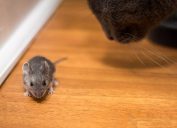If You Have This in Your Yard, You May Be Attracting Mice to Your Home
This rodent could make its way inside your house thanks to this backyard staple.
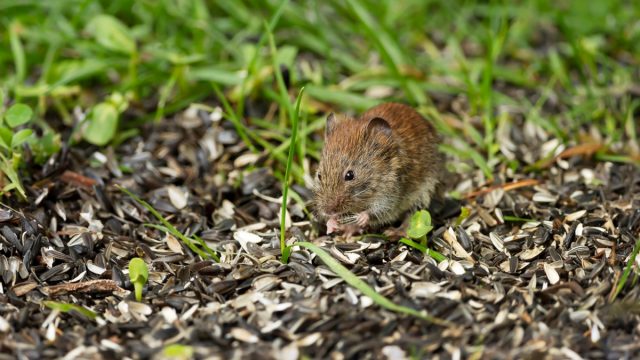
If you have mice in your yard, you might not even realize there's a problem until significant damage has occurred, pest experts warn. But as the fall and winter months roll in, mice become an even a bigger problem, as they are likely to move inside and seek refuge in your home. Even if you don't think there are any openings to your house for this pest to get into, mice can squeeze into spaces as small as a dime, according to Terminix. As it stands, the best method for keeping this rodent out of your indoor space is prevention. Read on to find out what common item in your yard may end up attracting mice to your home.
RELATED: If You're Not Cleaning This, You're Inviting Mice Into Your Home.
If you have a bird feeder in your yard, you may be attracting mice to your home.
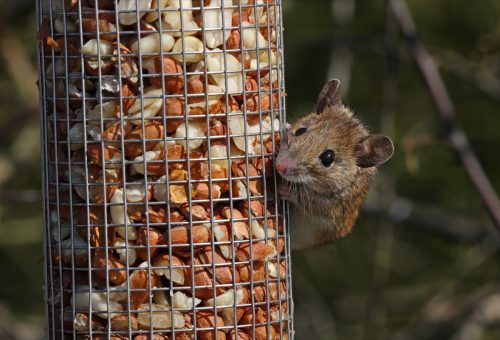
Bird feeders in your yard are a common source of attraction for mice, says Megan Cavanaugh, a pest control expert and co-owner of the pest control company Done Right Pest Solutions in Minnesota. "Nuts and seeds are a favorite food of mice," she explains. "Mice, like all animals, are always looking for food sources. If you have a food source in or around your home, they are going to be attracted to it."
According to Cavanaugh, bird feeders also are a high reward-low risk spot for mice to get food. Birds and squirrels that tend to be the target audiences for these feeders are not predators to mice, so these rodents can find food while being relatively safe.
This is especially true if the bird feeder is messy.
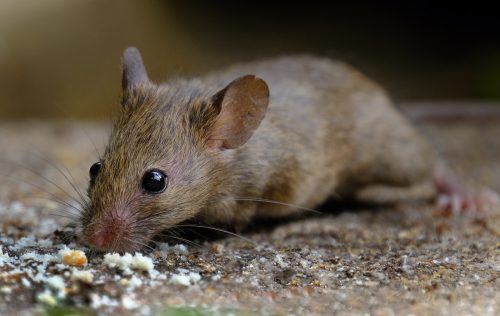
The less you clean your bird feeder and around it, the more likely you are to encounter rodents, according to experts. "When eating, the birds can shake the feeder and drop the seeds on the ground. The smell of nutritious seeds will attract unwanted rodents such as mice and rats," Clarissa Benny, a certified pest control technician and consultant at HouseGrail, says.
Tammy Poppie, a bird expert with On The Feeder, says letting your food go bad in your feeder may attract another concerning rodent: rats. "Rats are attracted to moldy seed in the bird feeder," she says. According to the Centers for Disease Control and Prevention (CDC), you should be cleaning your bird feeder at least monthly, but you might need to clean it more often "as bird poop and other dirt builds up on your feeder."
RELATED: For more pest advice delivered straight to your inbox, sign up for our daily newsletter.
There are ways to keep a bird feeder in your yard while also keeping rodents away.
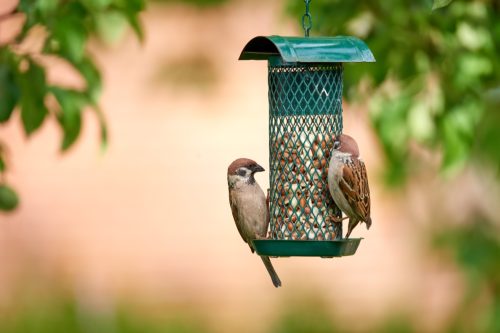
According to Benny, keeping your bird feeder higher off the ground can help deter rodents. If your feeder is already well-protected, like in a caged tube, five to six feet off the ground should be sufficient enough. But if you have something like a hopper feeder, it should be kept higher at eight to 10 feet off the ground, she says. You should also keep your bird feeder in the most remote part of your yard to keep any rodents attracted to it as far away from your actual house as possible. "If you place the bird feeder closer than 20 yards to your home, you should pay extra attention to make it hardly accessible for mice and rats," Benny says.
This means making sure the bird food is as inaccessible for mice to get to as possible, no matter where your bird feeder is located. "You can do this by adding obstacles to the bird feeder to make it more difficult for them, or grease the pole that the feeder is on so they can't climb up it. Also, be sure to trim trees and shrubs from around the bird feeder so they can not climb off of those onto the feeder," says Sharon Roebuck, owner of pest control company Eastside Exterminators in Seattle, Washington.
There are clear signs a mouse has gotten into your feeder.
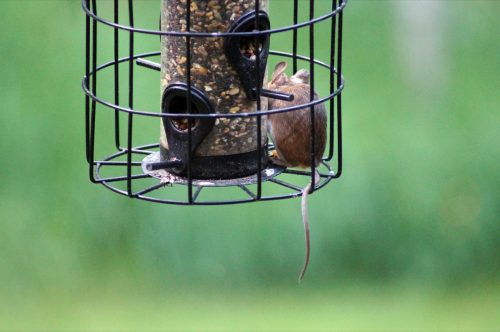
If you see bird feed scattered all over your yard, this could be a clear sign that mice have already gotten into it and are making their way into your home, according to Roebuck. Benny says you should also check for gnaw marks or scratches on your actual feeder. One other major indicator that rodents have been around is visible droppings and urine. "Droppings are the easiest to spot and the very first sign that you have a rodent problem. You will find them everywhere: around the feeder, in the house, even on your cat's bowl if they manage to get inside," Benny says. "Urine is another sign of rodent infestation. Mice have a very specific urine smell that is easy to distinguish."
RELATED: If You Notice This Smell at Home, You May Have Mice, Experts Warn.
